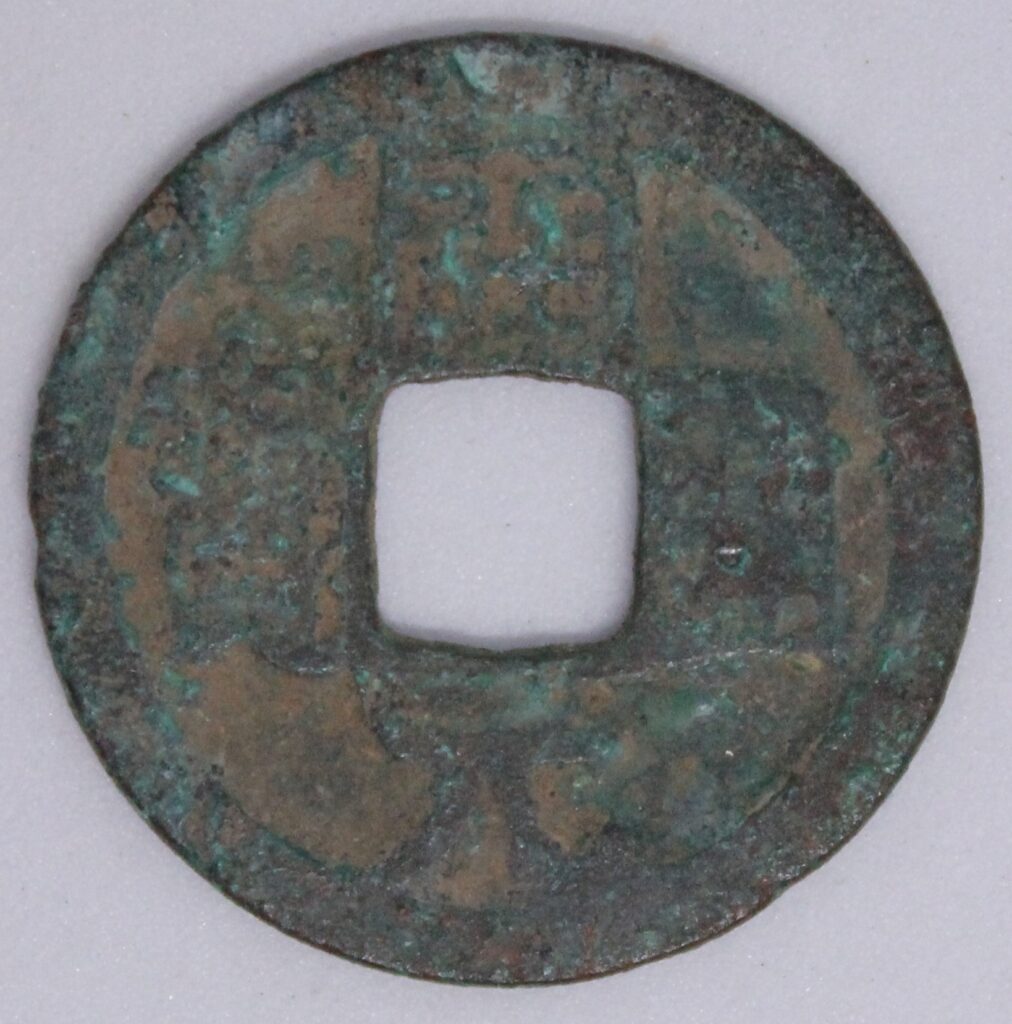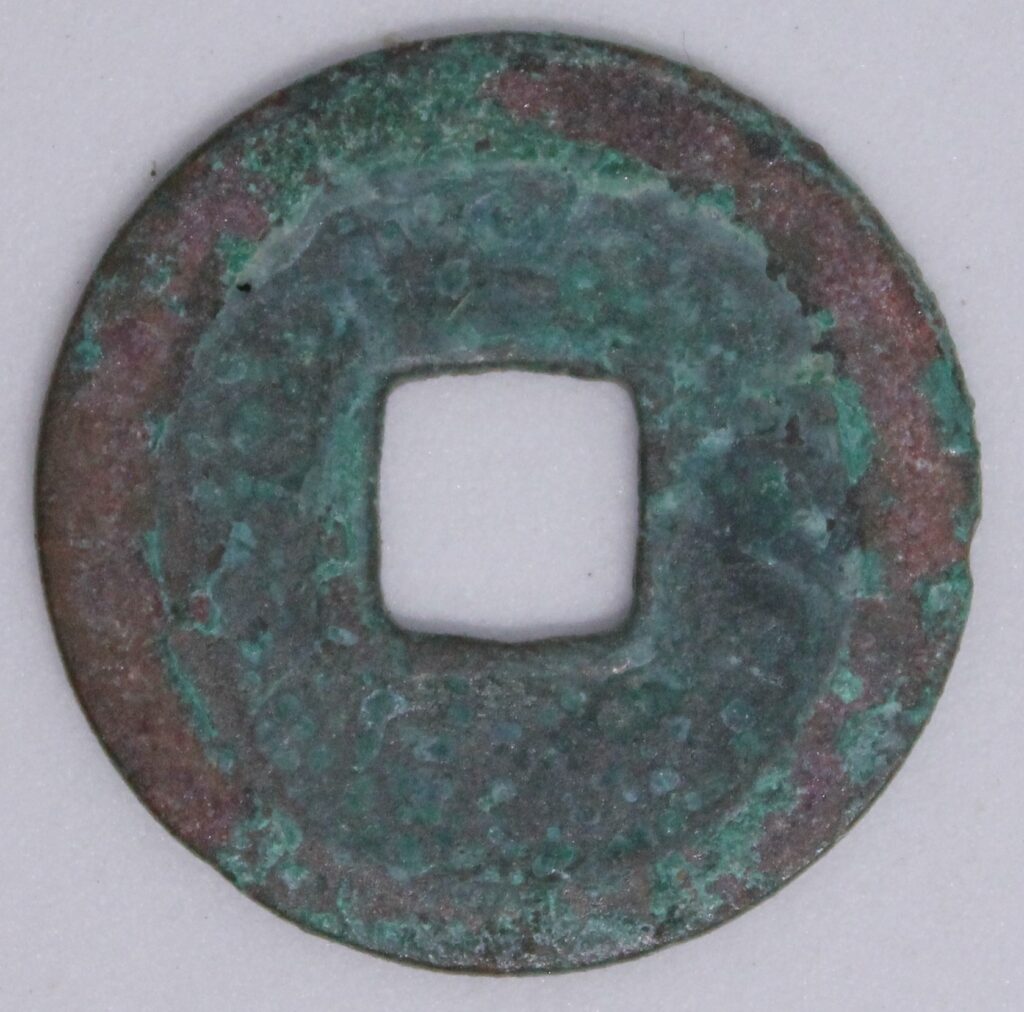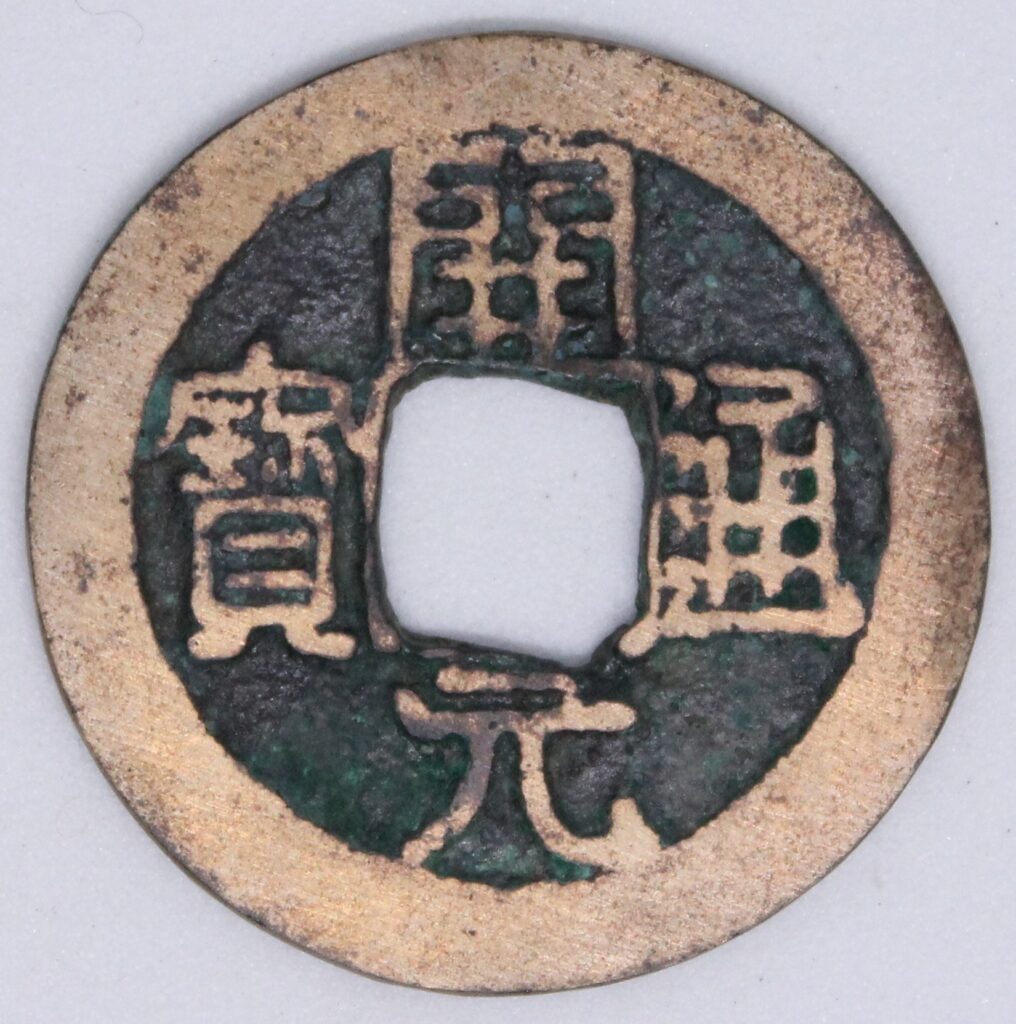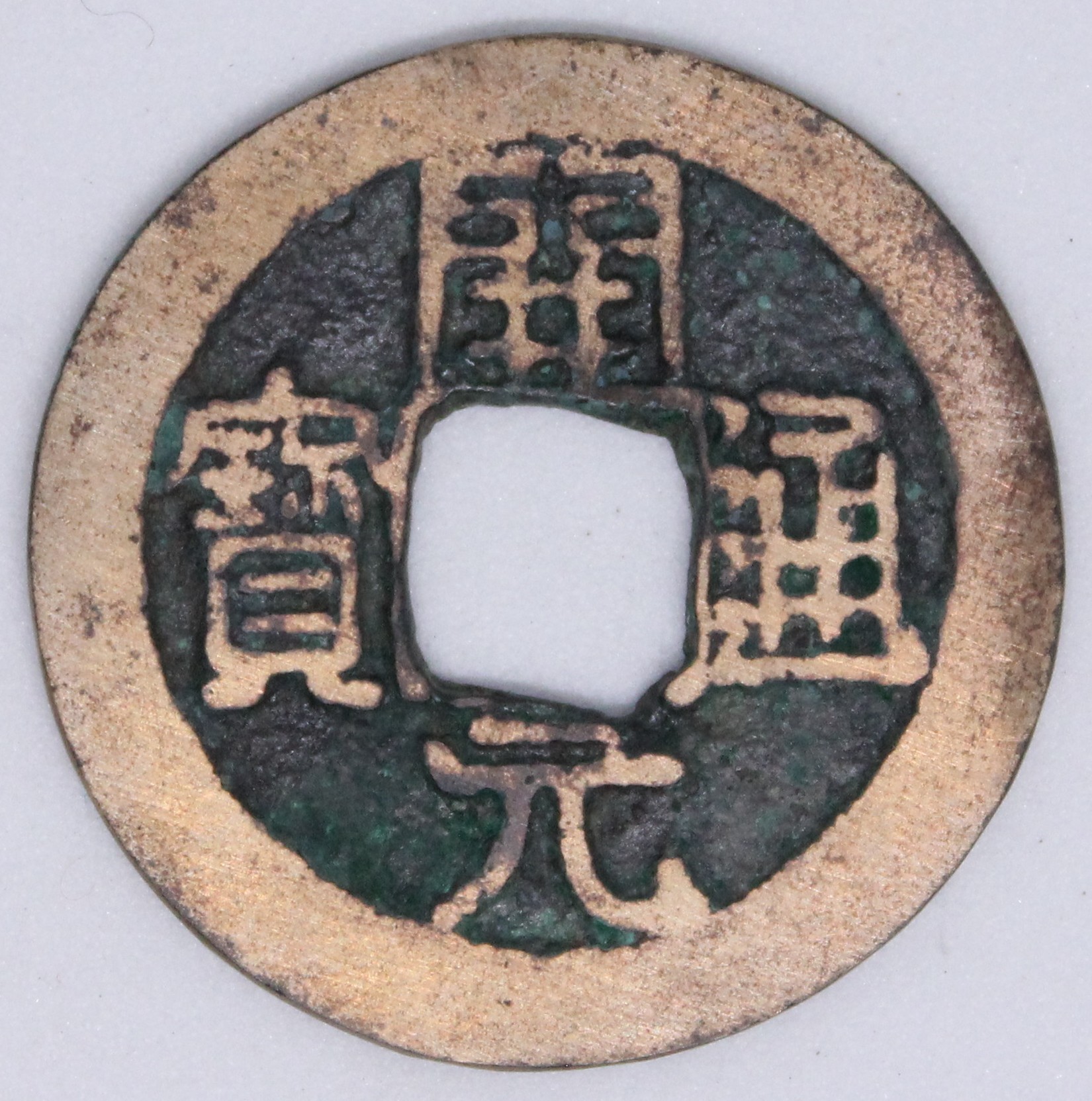The 和同開珎 (Wado Kaichin/Wado Kaihou) was the first coin minted among the 12 types of copper coins known as the “Kocho Jyunisen” (皇朝十二銭) issued in ancient Japan.
It was once considered the oldest coin in Japan. Currently, the oldest currency in Japan is believed to be the “Fuhon Sen(富本銭)” or “Mumon Ginsen(無文銀銭).”
It was modeled after the “ Kaiyuan Tongbao(開元通宝)” issued in the Tang Dynasty of China.
Kaiyuan Tongbao(開元通宝)



This copper coin was minted by Emperor Gaozu (Li Yuan) of Tang China in 621 (the 4th year of the Wude era). Its shape and weight served as a model not only for Chinese currency but also for that of neighboring countries. Japan’s Wadō Kaichin was also minted following this model.
The reading of this coin is “開元通宝” when read from top to bottom and right to left, and “開通元宝” when read from top to right and bottom to left. Both readings are understood. These two theories have coexisted since ancient times, sparking debate, and no conclusion has been reached to this day.
One theory suggests that when minting began in 621, it was read as “開通元宝,” but around 713, when the era name changed to “Kaiyuan(開元),” it began to be read as “Kaiyuan Tongbao(開元通宝).”
The fact that the Japanese currency “Wado Kaichin 和同開珎” (minted in 708), which was modeled after Tang currency, is read in a clockwise direction also supports the theory that the original order was “Kaitoenpo.”
In the “Old Book of Tang,” compiled during the Five Dynasties period, the history behind this was forgotten, and it was stated that “Kaiyuan Tongbao” was the correct name, while ‘Kaitoenpo’ was a colloquial term. As a result, “Kaiyuan Tongbao” has become established as the official name in Japan.


